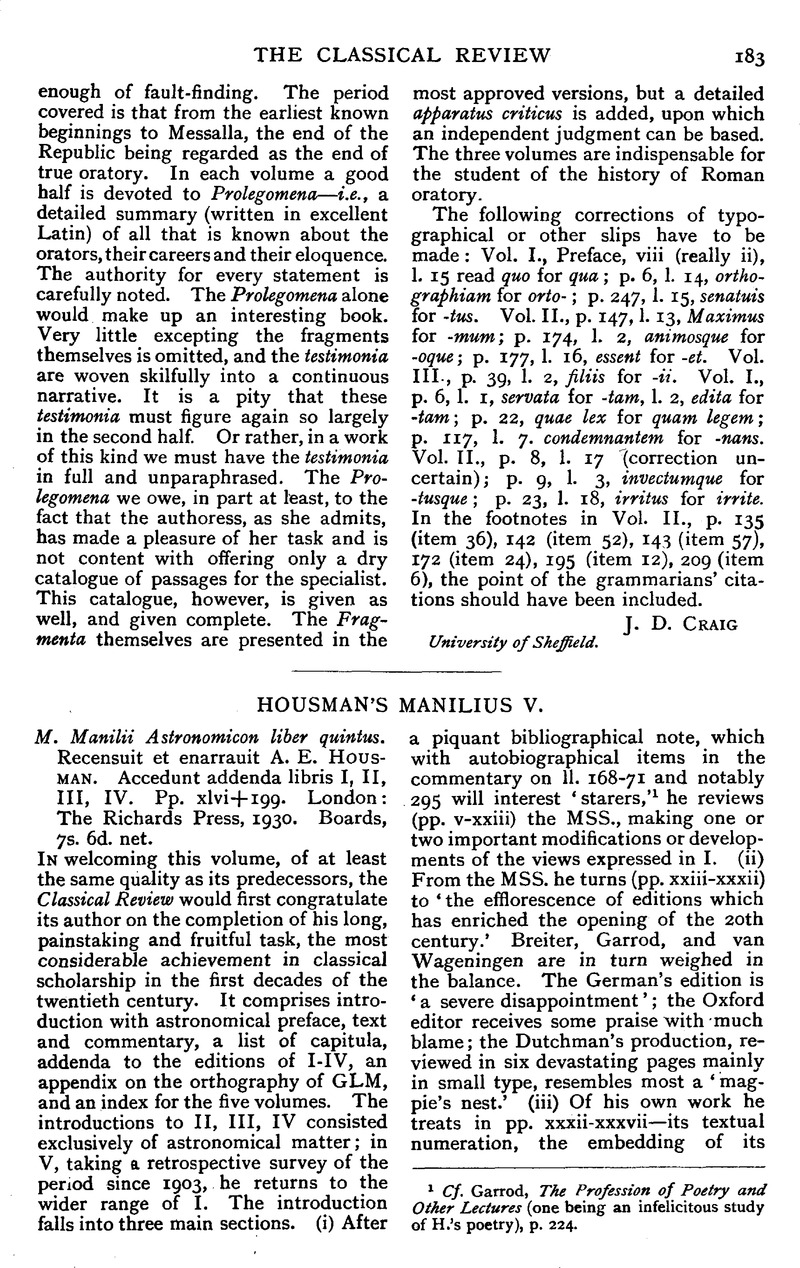No CrossRef data available.
Published online by Cambridge University Press: 27 October 2009

page 183 note 1 Cf. Garrod, , The Profession of Poetry and Other Lectures (one being an infelicitous study of H.'s poetry), p. 224.Google Scholar
page 184 note 1 Cf. p. 134 (1895): ‘Wageningeno … semel accidit ut probabilem coniecturam faceret.’
page 184 note 2 For discernet van W. vouches (wrongly, I suppose) M as, well as G.
page 185 note 1 Cf. C.Q. XV 175–6.
page 186 note 1 Have the Virgilian figures been noticed? Ecl. 1.7 per cent., Georg. 2.3 per cent., Aen. I 3.3, II 3.7, III 1.5, IV 4.3, V 3.1, VI 3.2, VII 3.4, VIII 4, IX 4.1, X 4.6, XII 4 per cent. The Eclogues are influenced by Theocritean technique. Aen. III is early. For I Lucretius has a percentage of 10.6, for 62 and 64 Catullus of 3.6. Virgil's successors generally appear to be more timid. In their respective first books Ovid Met. has 3.1, Val. Flacc. 2.6, Stat. Theb. 2.1, Sil. It. 2.5 per cent. Lucan has I 3.9, II 2.3, VIII 5.2 percent. The Manilius figures are I 4.1, II 5.4, III 5, IV 4.3, V 4.8 per cent.
page 188 note 1 His claims at 140 and 496 escape scot-free, and he gets off lightly at 724.
page 189 note 1 Cf. p. xvii: ‘It is to be remembered, not in derogation of their merits, that Scaliger, as the first editor to use G, and Bentley, as the first to use V, found virgin soil. Breiter and Ellis found virgin soil again when M was discovered, but bequeathed it not much impoverished to me.’